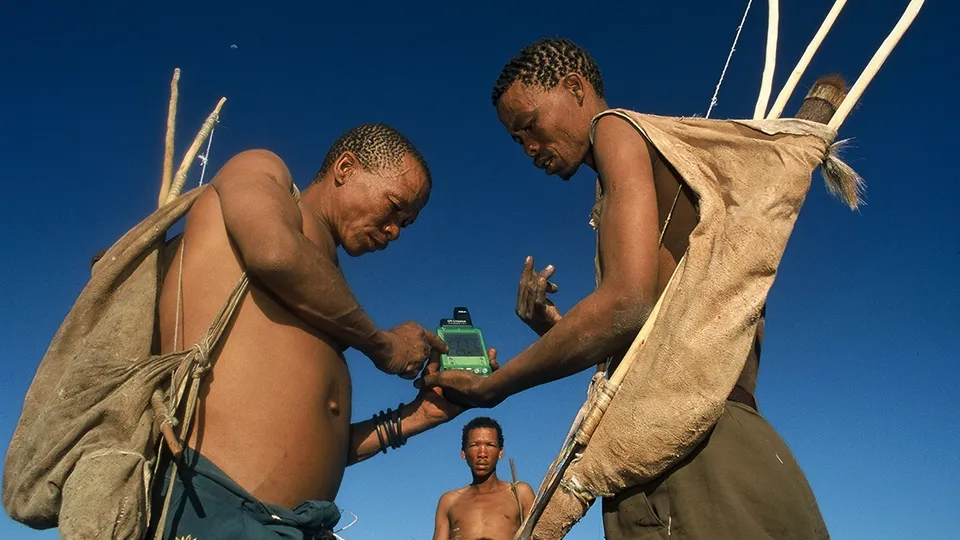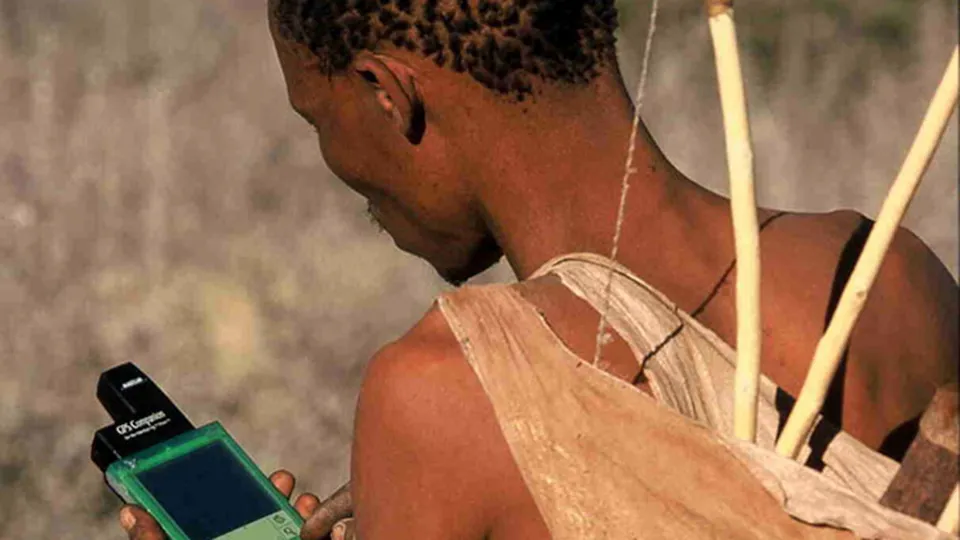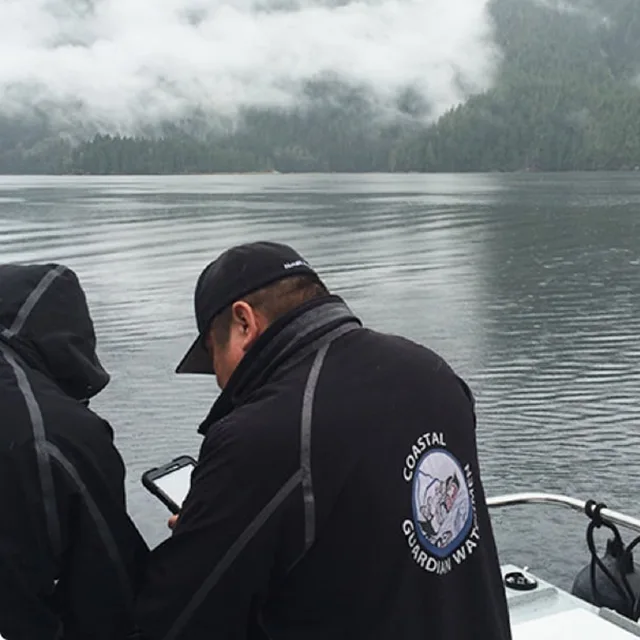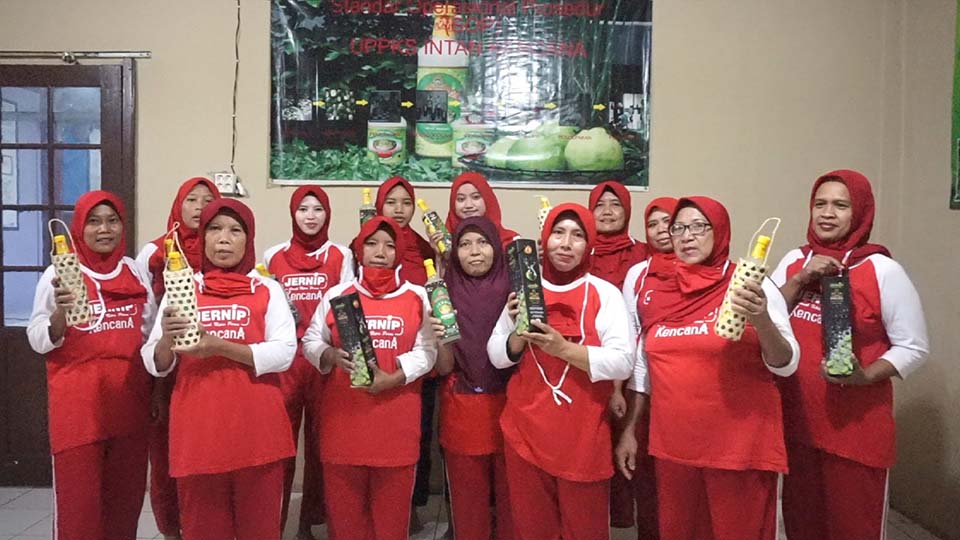Combining ancient tracking skills with modern technology, CyberTracker™ is a software with a three-fold purpose. To start with, CyberTracker offers a high-tech method of tracking animals in the field, thus having the potential to protect some of the most endangered members of the animal kingdom worldwide. Moreover, the software, launched by a South African anthropologist Louis Liebenberg, also helps to enrich modern science with invaluable – and fast disappearing – knowledge of indigenous populations. Finally, CyberTracker also allows for social and economic inclusion of indigenous people, providing them with opportunities for paid employment. The software is being used in major parks such as the Karoo National Reserve in South Africa, as well as for scientific projects and education.

Tracking – a traditional knowledge of Bushmen
Tracking is the way Bushmen in the indigenous communities follow an animal in the wild by looking for proof of their activity: their footsteps or other signs of their presence. Louis Liebenberg, a South African anthropologist with a deep passion for nature, has spent a significant part of his life studying and researching tracking techniques of indigenous populations. He himself is highly skilled in tracking and has lived with the Bushmen in the Kalahari Desert to further master his skills.
The vast area of the Kalahari Desert has been the home for the Bushmen, the oldest inhabitants of Southern Africa, for more than 20,000 years. Traditionally living on hunting and gathering in the harsh surroundings of the Kalahari, the Bushmen are considered to be the best trackers in the world; they can immediately identify, from the faintest marks on the sand, the species of an animal as well as its sex, age, pace and so on. Their survival in the Kalahari has been possible by developing skills in tracking, and an enormous amount of information about animal movement is stored in their collective traditional knowledge.
Economic inclusion of Bushmen: making tracking a modern profession
While working with the Bushmen, Louis realized the power of lessons passed on to these indigenous people from their ancestors. At the same time, he felt that the art of tracking was on the verge of extinction due to the fast-diminishing hunting grounds in the Kalahari. Consequently, the Bushmen could no longer live as hunter-gatherers; they needed alternative means, alternative jobs.
The only way to provide a livelihood for the indigenous group would be through incorporating tracking into a modern profession. A natural researcher, Liebenberg thought that if he could find a way to “capture” the information about animal movements stored in the minds of the Bushmen, it could revolutionize wildlife management and conservation initiatives and greatly contribute to scientific exploration of wildlife behavior. In addition, involving the master tracker Bushmen, would also provide them, at least partially, much-needed income generating opportunities.
Fast forward to today, a non-profit entity called the CyberTracker Conservation, established by Liebenberg to disseminate the benefits of the CyberTracker technology, offers the CyberTracker Tracker Certification. This certification enables trackers to be employed in ecotourism, as rangers in anti-poaching units, in wildlife monitoring and scientific research. Since 1990s, the Certification has resulted in increasing levels of tracking skills in Africa, USA and Europe, reviving tracking as a modern profession.
CyberTracker – a software to digitalize ancient tracking techniques
Liebenberg decided to put more effort on this idea and in 1996 he teamed up with Justin Steventon, a computer science student, and Karel Benadie, a tracker working in Karoo National Park in South Africa. The same year, the team developed the CyberTracker – a software that takes animal tracking to the cyber-age. Liebenberg successfully combined Kalahari Bushmen tracking techniques with cutting edge computer and satellite technology.

The CyberTracker software is basically a mobile data capture solution that can be used by non-technical people. It can be used on third party GPS-enabled devices such as smart phones and handheld computers for recording observations of animal movements quickly and easily. The screen interfaces can be customized in accordance with one’s data collection needs.
The use of CyberTracker can be very efficient in monitoring wildlife, animal behavior, lifestyle changes, etc. Data collected by using the CyberTracker on Lowland Gorillas, for example, showed the extent of these primates’ mortality due to the Ebola virus. Lowland Gorillas’ vulnerability to Ebola was largely unknown until the monitoring through CyberTracker showed a significant difference in their population before and after the human Ebola outbreak in 2003.
CyberTracker: making science more inclusive
Already in 1990s Liebenberg had the idea that would define his future work, and about which in 2021 he would write his book The Origin of Science: that tracking techniques may be at the origin of the modern science. According to Liebenberg, science may have evolved more than a hundred thousand years ago with the evolution of the reasoning of hunter-gatherers, using complex tracking techniques.
However, if the art of tracking was indeed at the origin of science, thought Liebenberg, then modern-day trackers should be included in the modern scientific process. Unfortunately, this has never been the case for one simple reason: some of the best indigenous trackers in Africa are non-literate.
This is why the CyberTracker Icon User Interface for oralate (people who cannot read or write) trackers was developed in 1996 with the help of Karel Benadie, a tracker working in the Karoo National Park in South Africa. The CyberTracker was first used to record the movements and behavior of black rhino, a highly endangered species, and the results were later published as a journal article.
This was, quite possibly, the first paper based on data gathered independently by two oralate trackers, confirming a hypothesis about rhino feeding behavior put forward by the trackers. It was a demonstration that oralate trackers can do science.
CyberTracker Conservation: commercialization and IP rights

CyberTracker Conservation (Cape Town, South Africa) is a non-profit Public Benefit Organisation that promotes the vision of a worldwide environmental monitoring network. The organization is the body that distributes free CyberTracker software for data gathering, visualization and easy retrieval. It also provides Tracker Certification to preserve indigenous tracking skills and to improve observer reliability in biodiversity research and conservation. Furthermore, CyberTracker Conservation runs educational and empowerment projects with indigenous communities, in South Africa, Australia, Canada, South America and other parts of the world. One of such projects is the Kalahari San Master Tracker Programme run in 2021-2022.
As a non-profit organization, the Conservation depends on funding from other organizations, including the European Comission, UNESCO, Frederick Mulder Foundation, and others.
Up until 2025, CyberTracker has been available through freely downloadable software that can be used in a handheld device, such as a smartphone. Staring 2025, CyberTracker Conservation will continue to provide a free service to Indigenous Communities and Community Science, while offering the software to other users against a small fee.
Only the name of the technology, CyberTracker, is registered as a trademark with the United States Patents and Trademarks Office (USPTO). Although CyberTraker is a freeware, the trademark registration facilitates the product’s promotion and ensures its authenticity, which contributes to Libenberg’s objective of environmental conservation.
CyberTracker: business development
By 2010, more than 35,000 users have downloaded the CyberTracker software. In 2024, the software has been upgraded with the possibility to create a customized application on a laptop or desktop computer, and then install your app onto an Android or iPhone smartphone. This is a gamechanger for non-technical users, who need to adjust CyberTracker software to fit their own needs, while still tapping into its vast tracking functionality.
This new update and all the following ones are still intended to remain completely free of charge for all indigenous community users.
Impact of CyberTracker
The impacts of CyberTracker on wildlife conservation have been significant. Many protected areas and reserves use this unique technology: the Kruger National Park in South Africa, for example, used 125 CyberTracker units in 2010. An Ebola virus outbreak in Congo in 2003 and its impact on antelopes and Lowland Gorillas were identified with CyberTracker.
CyberTracker contributes to educational and scientific research activities through its non-invasive method of collecting information. The NatureMapping Program and BioKIDS have been using CyberTracker in elementary, primary and secondary schools in the USA for science and environmental education. Some other uses include promoting ecotourism, controlling poaching and even for the police to catch criminals.
Rolex Award for CyberTracker
CyberTracker’s contribution in environmental monitoring and wildlife conserving was recognized when Liebenberg was honored with the prestigious Rolex Award for Enterprise in 1998. Rolex offers this award to individuals in recognition of their outstanding contribution to the betterment of mankind.


